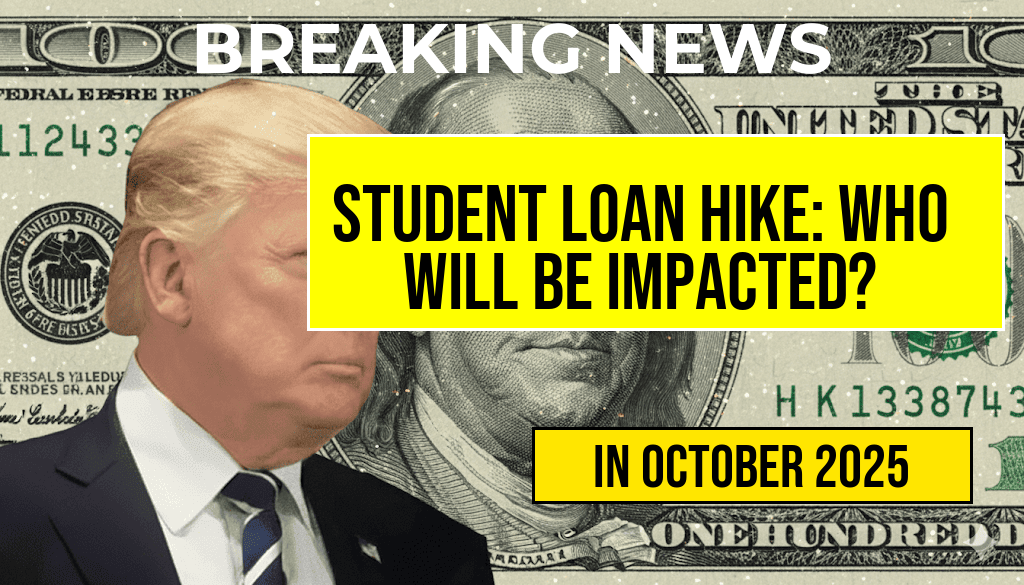Millions of student loan borrowers across the United States are bracing for a significant financial shift, as recent policy changes threaten to increase monthly payments by approximately $400 for many. This looming surge stems from the expiration or overhaul of federal student loan relief programs established during the COVID-19 pandemic, which temporarily paused payments and reduced interest rates. As the federal government transitions back to traditional repayment plans, the burden is expected to fall unevenly across different borrower groups. Early impacts are likely to be felt most acutely among borrowers with high debt loads, those nearing the end of their repayment terms, and individuals in vulnerable economic situations. The ripple effects of this change could influence personal finances, housing stability, and broader economic activity, prompting policymakers and advocates to call for targeted relief measures amid mounting uncertainty.
What’s Driving the Increase in Monthly Payments?
End of Temporary Relief Programs
During the COVID-19 crisis, the federal government implemented a series of relief measures, including a suspension of student loan payments, interest accrual freezes, and debt forbearance. These measures provided temporary financial reprieve for over 43 million borrowers, as detailed by the U.S. Department of Education. However, with the expiration of these programs in 2023, borrowers are now returning to standard repayment schedules that can dramatically increase monthly obligations for some.
Resumption of Standard Repayment Plans
Borrowers who had been on income-driven repayment or other flexible plans are now transitioning back to fixed or graduated repayment schedules. For some, this transition could mean a jump of $400 or more per month, depending on their loan balances and repayment terms. A recent analysis by the Department estimates that about 20 million borrowers will see their monthly payments increase, with some experiencing hikes up to 50% compared to their previous reduced or suspended payments.
Who Will Be Most Affected?
High-Loan-Balance Borrowers
Students with large aggregate debt—often exceeding $50,000—are most vulnerable to steep payment increases. These borrowers, many of whom are recent graduates in high-cost fields, could face monthly bills that strain their budgets and hinder financial progress.
Recent Graduates and Young Professionals
Individuals who entered the workforce during the pandemic, often with less savings and job stability, are likely to experience immediate financial pressure. The return to standard repayment plans may force them to cut back on discretionary spending or delay major life milestones like homeownership.
Vulnerable Economic Groups
Low-income borrowers and those in industries hit hardest by economic shifts—such as hospitality or retail—are at increased risk. For many, the added monthly burden could exacerbate existing financial hardships and contribute to missed payments or defaults.
Potential Broader Impacts
| Impact Area | Description |
|---|---|
| Housing Market | Higher debt obligations may reduce homeownership rates among young adults and delay mortgage applications. |
| Consumer Spending | Reduced disposable income could lead to declines in retail sales and economic growth. |
| Financial Well-being | Increased stress and financial insecurity may negatively affect mental health and job stability. |
Policy Responses and Future Outlook
Federal Initiatives and Relief Efforts
Amid mounting concerns, some policymakers are advocating for targeted relief measures, including income-based repayment options and extended forbearance programs. The Biden administration has also proposed forgiving parts of student debt for qualifying borrowers, aiming to ease the immediate burden and stimulate economic activity. Details remain fluid, and the future of comprehensive relief depends on legislative action and judicial rulings.
Advice for Borrowers
- Review your repayment options and consider switching to income-driven plans if eligible.
- Stay informed about upcoming deadlines and potential for deferment or forbearance extensions.
- Seek financial counseling to develop strategies for managing increased payments without sacrificing essential expenses.
Resources and Support
Borrowers seeking assistance can access information through the Federal Student Aid website or consult with financial advisors specializing in student debt management. Staying proactive is crucial as the landscape evolves and new relief measures emerge.
Frequently Asked Questions
What is causing the recent increase in student loan payments?
The increase is primarily due to changes in interest rates and the end of pause periods that temporarily suspended payments, leading to higher monthly repayments for many borrowers.
Who will be most affected by the $400 monthly payment increase?
Borrowers with high student loan balances and those who are on income-driven repayment plans are expected to face the most significant impact, especially if they have limited financial flexibility.
What are the potential consequences of this student loan crisis?
The crisis could lead to increased financial stress for millions of borrowers, higher default rates, and a possible slowdown in economic growth due to reduced disposable income.
Are there any options for borrowers to manage or reduce their student loan payments?
Yes, borrowers can explore income-driven repayment plans, loan forgiveness programs, or refinancing options to help lower their monthly payments and better manage their debt.
When will the payment increases take effect, and what should borrowers do now?
The payment increases are expected to begin soon, so borrowers should review their loan terms, contact their loan servicers, and consider financial planning to prepare for the upcoming changes.

Leave a Reply